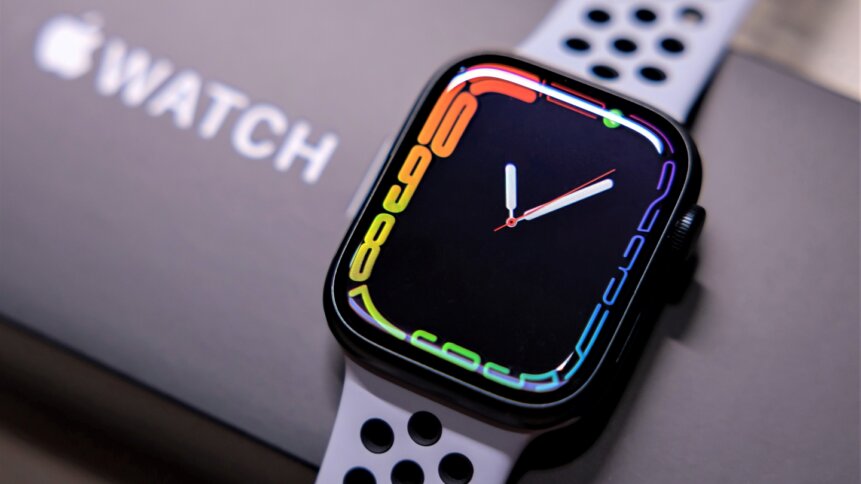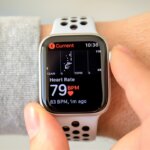Could prime numbers improve Apple Watch battery life?

|
Getting your Trinity Audio player ready...
|
Prime numbers – positive integers that can only be divided by themselves and one – are useful mathematical tools. The reassuring padlock seen in browser search bars has prime numbers to thank for helping to create the security keys necessary for keeping web traffic safely encrypted – at least until quantum computers become powerful enough to solve that giant puzzle. And the benefits of prime numbers could one day extend to wearable displays, according to intriguing research published in the Nature journal: Light: Science & Applications (open access). A simpler color encoding framework – built around the numbers 2, 3, and 5 – has the potential to improve Apple Watch battery life, for example, by reducing the number of computing steps required to generate graphical output.
Power-saving opportunity
Color displays in wearable devices such as the Apple Watch and other wrist-worn gadgets produced by hardware manufacturers are estimated to consume anywhere between 40-70% of the total battery power. Usage times will vary depending on the screen settings, but color displays are power-hungry elements of wearable devices. And color encoding schemes that can improve the overall energy efficiency of smart gadgets, particularly if they enable a full day’s use without charging, are likely to be welcomed by developers.
Apple has long been rumored to be working on so-called microLED displays as the next-generation technology for its smartwatches. But with each microLED being micron-sized, compared with millimeters for regular LEDs, assembling displays is proving to be tricky. There are other issues holding back the technology too, such as ensuring uniform screen brightness. Each individual microLED may perform slightly differently, and visual display imperfections are easily noticed by the human eye. One reason for hardware designers, such as Apple and others, to keep banging their heads against the microLED wall, is the prospect of much lower power consumption. But in the meantime, prime numbers could turn out to be an easier fix to improve Apple Watch battery life.
Even when display makers finally solve their microLED production issues and roll out affordable screens at scale, unifying colors by primes could still be applied as an encoding scheme to lower processing overheads. Which begs the question – how does the new prime number based color system work? And what makes the encoding more efficient than traditional schemes such as using RGB (Red, Green, Blue) or CMYK (Cyan, Magenta, Yellow, Key black)?
Color code = 2, 3, and 5
The new prime number based color system – dubbed C235, referring to its three prime integer building blocks – uses 2, 3, and 5 to represent the core colors of red, green, and blue, respectively. And from those primary colors, others can be easily encoded – for example, 2 x 3 = 6 would represent yellow. And, 2 x 3 x 5 = 30 would represent white (a mix of all three primary colors). To indicate greyness levels, the group uses powers of 30 – with thicker, darker colors represented by larger numbers. In their paper, the China-based team shows how it’s possible to create an entire color wheel based on the new scheme. And the researchers claim that their encoding unifies CMYK and RGB palettes, whilst compressing values into a more practical color space.
Representing the colors purely as numbers has benefits when it comes to computation. “R, G, B and C, M, Y, K are letter symbols; it is hard to use them to explicitly express the relationship between colors,” writes the group. The C235 prime number scheme makes it more straightforward to carry out what could be considered ‘color maths’ – for example, adding together different light sources and determining the output. The researchers list a range of potential applications, which could be helped by such mathematical operations, from smart lighting to commercial displays.
Considering energy efficiency gains – which, if implemented, could potentially improve Apple Watch battery life – the researchers dig into the number of logical bits needed to represent colors, based on their framework. And the team concludes that its C235 scheme could be much simpler to implement in hardware – compared with RGB or CMYK color frameworks – and require fewer duty cycles to manage brightness levels.
There could be additional spin-off applications too, such as a new way of colorizing DNA information, which could help to visualize the relationship between amino acids and genetic sequences. Time will tell, which of the use cases catch on. But the C235 alternative to traditional RGB and CMYK schemes is a novel idea.
The prime number color encoding is so novel that even ChatGPT dismisses the opportunity for the digits 2, 3, and 5 to shake up the display scene. When asked, “How can prime numbers improve apple watch battery life?” OpenAI’s ChatBot replies, “Prime numbers don’t have a direct impact on Apple Watch battery life.” But tech developers may think differently, thanks to the work of researchers in Hong Kong, which could one day reduce the energy footprint of electronic displays.









